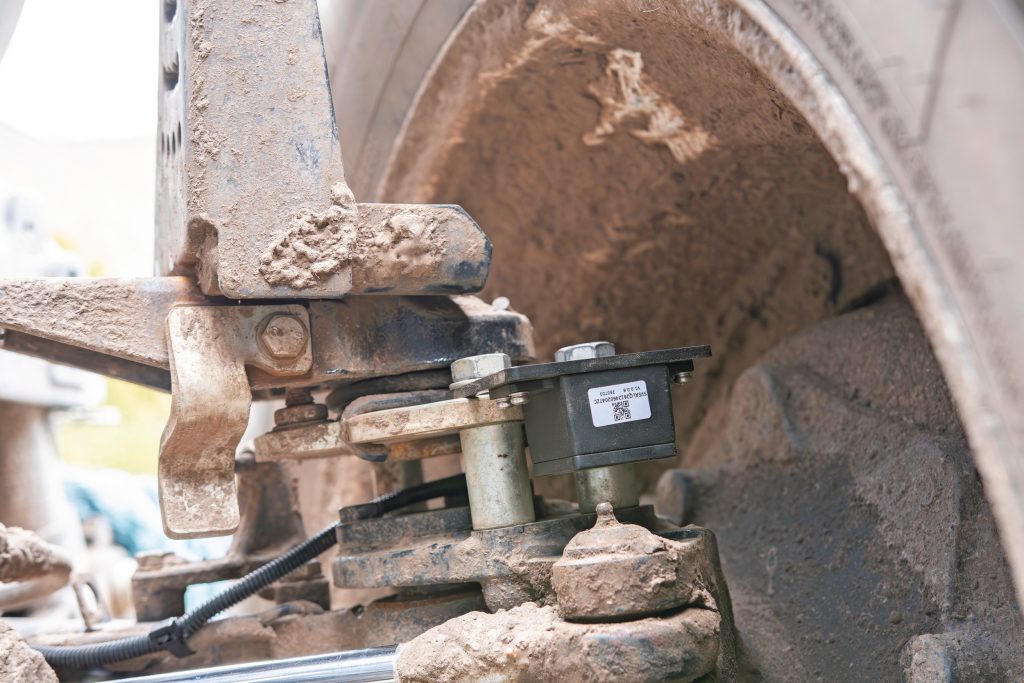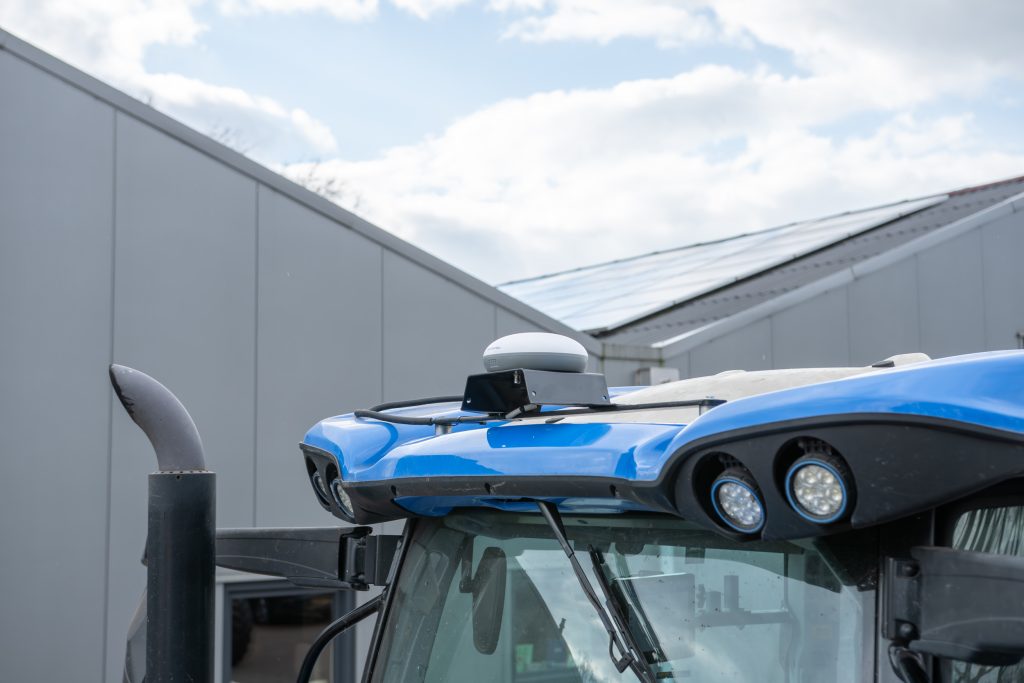Sveaverken F100 budget GPS steering system ideal for beginners

The Swedish company Sveaverken is still a relatively unknown player in the field of automatic steering systems. Yet, with the Sveaverken F100 GPS steering system, you can work with an accuracy of 2.5 centimeters for a relatively low price. Future Farming puts it to the test: is this budget-friendly solution worth it, or is cheap ultimately expensive?
Those looking for a budget-friendly GPS auto-steer solution now have a wide range of brands to choose from. Sveaverken belongs in the same category as Fieldbee and FJ Dynamics. For €5,000, you can purchase a retrofit kit and install it yourself or have it done by a mechanisation business. Within 2 to 3 hours, the system is ready to hit the field. However, for a tidy and professional installation, plan for over a day’s work.
Compatible with common vehicle brands
The retrofit kit is nearly complete for all tractor brands. It includes a 10.1-inch LED touchscreen running on Android. The kit looks like an Android tablet in a rugged casing, but it is actually a dedicated onboard computer running Sveaverken’s proprietary application. It is water- and dust-resistant to IP65 standards, making it suitable for open tractors as well.
The kit also includes an electric steering motor. Installing it requires some mechanical aptitude. Essentially, you remove the original steering wheel and replace it with the supplied one. The motor mounts to the steering column using three clamps. This is sufficient for most brands, though some minor modifications may occasionally be needed. The motor is not bolted directly to the column, as it’s quite powerful—clamping provides more reliable fixation than screws in a plastic cover.
The box includes a variety of spacers, mounting hardware, and a RAM mount for the display. As such, the system is easy to install on nearly all standard tractors and self-propelled machines. For tractors without telescopic steering or with the adjustment lever beside the column, installation is practically plug-and-play. For tractors with a telescopic adjustment button in the wheel, like CNH machines, some modification is required. On the New Holland T7.210 used in this review, these adjustments were done by the dealer, with a neat and near-original look as a result.
Flatter steering wheel
The steering wheel itself does not resemble a cheap racing-style wheel; it has the size and feel of a standard wheel. It is, however, flatter, since it sits closer to the driver due to the motor behind it. To preserve comfort, the wheel is less deeply dished. Sveaverken will soon release a new steering motor that is 2 cm shorter, along with a redesigned steering wheel. The motor’s plug will also be replaced with a right-angle connector for a cleaner installation.

Up to 38 satellites at once
Mounted on the roof is a white dome containing built-in gyroscopes. During our visit to Neerkant, in the Dutch province of North Brabant, 44 satellites were available. Sveaverken’s system can simultaneously process signals from up to 38 satellites; the remaining ones remain on standby.
A steering angle sensor is mounted to the front axle. This sensor also contains an internal gyroscope, eliminating the need for a linkage rod to measure the steering angle. The system maintains 2.5 cm accuracy across speeds from 600 m/h to 20 km/h in real-world conditions.
The set supports free use of SBAS and PPP signals, which can provide up to 10 cm accuracy according to the manufacturer. This, however, is in ideal conditions and when driving up and down rows, consistently using the adjacent line. For higher accuracy of 2.5 cm, a correction signal subscription—such as RTKned—costs around €300 per year.
Prefer to operate offline? Use a mobile base station operating on a radio signal. This device works on both 220V and 12V battery power, and provides correction signals within a 10 km radius. It costs a one-time fee of €1,900.

Automatic headland turns possible
The display allows you to unlock additional features via paid licenses. For €1,000 extra, you can activate automatic headland turning (U, Y, and Ω-turns), as well as use contour guidance and field boundary features. During turns, the screen gives instructions for when to switch between forward and reverse.
Additional features include section control (€400), application rate documentation, and task map usage (€400), provided you add an ISOBUS wiring harness (€900).
Finally, there is an online management system that is free for the first year. It allows you to create field records and view tasks. After the first year, it requires a subscription. In practice, most users skip this, as fields are already stored in the system.

Great for beginners
In conclusion, we were positively surprised by the look and ease of use of the Sveaverken F100 budget GPS steering system. It is a great entry-level solution for farms looking to start driving with precision without too many demands. However, if you are aiming for more professional use of section control, task maps, and application rate management, you might be better off with a premium brand offering full-service support and expertise.



